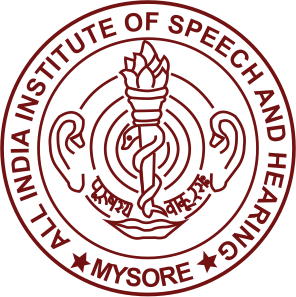| DC Field | Value | Language |
|---|
| dc.contributor.author | Anjali Maratt, Z | - |
| dc.contributor.author | Preethi Thomas, T | - |
| dc.contributor.author | Pushpavathi, M | - |
| dc.contributor.author | Venkatesan, S | - |
| dc.contributor.author | Siddesh, N S | - |
| dc.contributor.author | Jayakaran, G T M | - |
| dc.date.accessioned | 2020-11-27T09:16:56Z | - |
| dc.date.available | 2020-11-27T09:16:56Z | - |
| dc.date.issued | 2015 | - |
| dc.identifier.issn | 0973-662X | - |
| dc.identifier.uri | http://203.129.241.91:8080//handle/123456789/1951 | - |
| dc.description.abstract | Children with Down’s syndrome (DS) most commonly exhibit poor oral motor skills. These deficits in oral motor functioning may be attributed to abnormalities in the anatomy and physiology of the oral mechanism. The deviations in oral structures affect the development and functioning of the oral motor mechanism in this population. The present study examined the deviations in the oral motor skills in children with DS in the age group of 6 months to 60 months and compared with age matched children with developmental delay and intellectual disability (ID) without DS. An adaptation of the Scales for Oral-Motor Assessment (Rupela,
2008) was administered to the participants which consisted of rating of oral structures at rest and on non-speech tasks. The results showed that participants with DS exhibited lower scores on oral motor structures at rest. The findings indicated a developmental trend for participants with DS on oral motor function tasks in contrast to the ID group without DS. Further results of correlation analysis revealed a significant correlation between the oral motor structures at rest and oral motor function for participants with DS.These results suggest that although participants with DS and participants with ID without DS display atypical oral motor skills, they differ in oral-motor development patterns and exhibit heterogeneity within the group. | en_US |
| dc.language.iso | en | en_US |
| dc.subject | Down’s Syndrome | en_US |
| dc.subject | Oral Motor Function | en_US |
| dc.subject | Developmental Pattern | en_US |
| dc.subject | Hypotonia | en_US |
| dc.title | Exploratory Study on the Developmental Pattern of Oral-motor Function in Children with Down’s syndrome | en_US |
| dc.type | Article | en_US |
| dc.journalname.journalname | Journal of All India institute of Speech and Hearing | en_US |
| dc.volumeno.volumeno | 34 | en_US |
| dc.pages.pages | 55-62 | en_US |
| Appears in Resource: | Journal Articles
|

